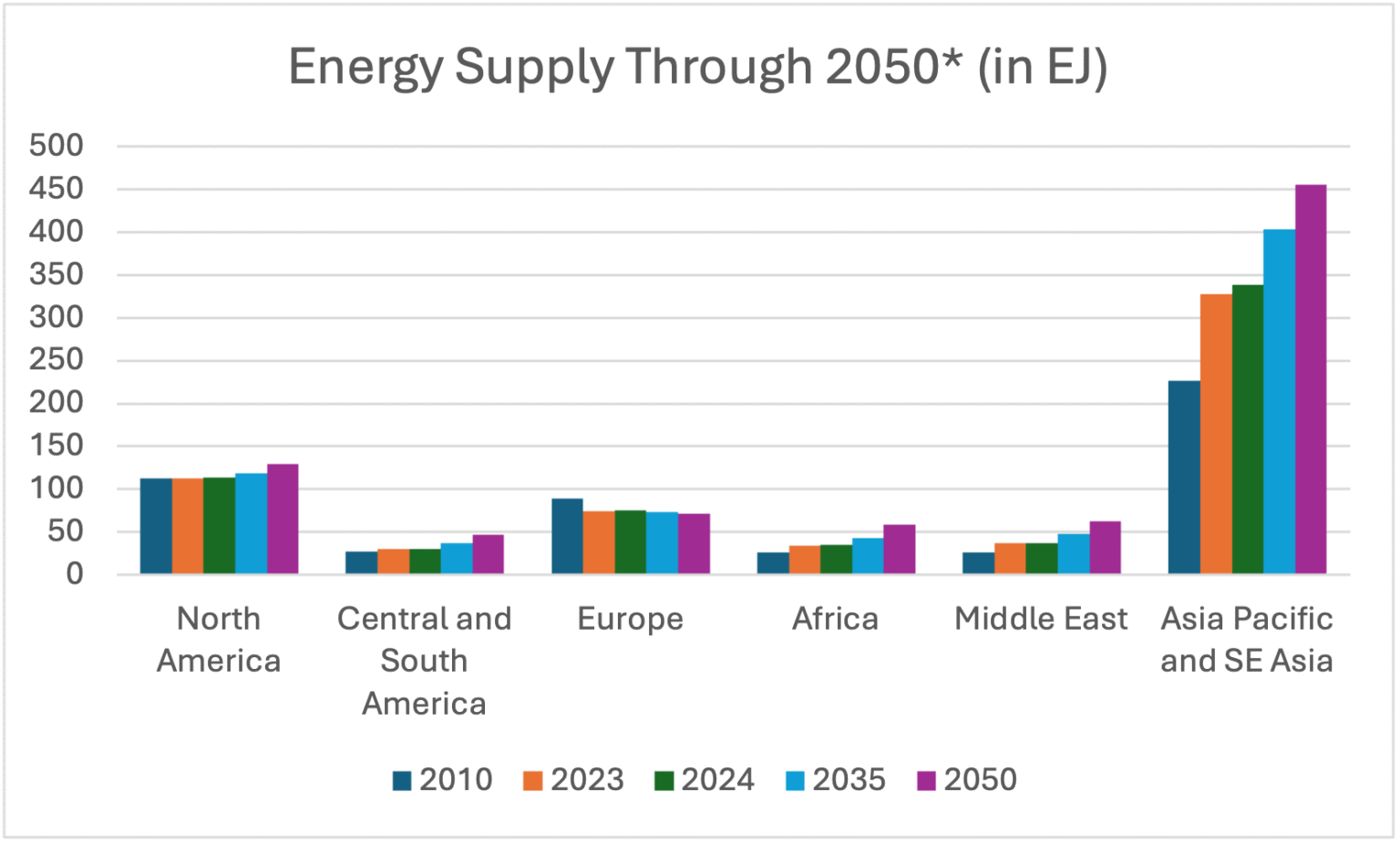
 











|
Signature Sponsor


November 26, 2025 - Coal remains available, accessible, affordable, and politically durable, which means many developing countries will rely on it until equally secure energy alternatives emerge. The war in Ukraine, sanctions on major energy producers, regional instability, and supply chain uncertainty have pushed energy security to the forefront of political and economic agendas worldwide. For some nations, this renewed focus means coal will remain part of the mix for longer than many had anticipated. In particular, many rapidly growing developing Asian economies and populations may continue to rely on coal as their energy needs grow—at least until a comparably secure and affordable alternative emerges.
Source: 2025 World Energy Outlook, IEA
Why Coal Persists As a Transition Fuel Across much of Asia, coal continues to outperform other fuels as a source of heat and electricity. The Four As of energy security—availability, affordability, accessibility, and acceptability—help explain why coal remains so deeply embedded, even as many countries voice their aspiration to transition to other energy sources.
Emerging Asia accounts for nearly one-third of global coal reserves and resources in place. As new coal mines and power plants continue to be built and planned, the region is poised to maintain its leading role in global coal production. 2. Affordability When coal is domestically available, it is typically far cheaper than other non-intermittent sources of heat or power. Existing infrastructure reduces capital costs, and where new facilities are needed, they are relatively simple and inexpensive to construct. This cost advantage makes coal especially attractive for developing economies seeking to expand energy access without undermining growth. 3. Accessibility Coal can be transported through low-tech infrastructure—ships, railways, or trucks—and stored outdoors with minimal loss. Unlike natural gas or oil, it does not require specialized tankers, pipelines, import terminals, or high-tech equipment such as solar panels or wind turbines. This logistical simplicity makes coal a practical and reliable option for countries lacking sophisticated (and expensive to build) energy infrastructure. 4. Acceptability Among the Four As, “acceptability” is the most nanced. At its core, it refers to public acceptance of an energy source. In Emerging Asia, where energy security is a priority due to economic growth aspirations, coal’s domestic availability—combined with its ability to provide electricity, heat, and jobs—makes it politically and socially palatable. As I noted elsewhere, energy sources that support economic growth and employment tend to maintain local legitimacy, even amid environmental concerns. A Tailored Approach to Energy Transition Energy security has become a universal concern, but it carries particular weight in countries experiencing rapid economic and demographic growth. Reliable, affordable energy is essential to lifting billions out of energy poverty. In a world trending toward de-globalization, more nations are turning inward to secure domestic sources of energy—valuing affordability and accessibility as much as sustainability. For many, coal will continue to serve that role. It remains the most geographically dispersed energy resource on Earth. Over time, as other technologies mature, become more reliable or more affordable, transitions away from coal will accelerate. Countries with strong solar potential could leapfrog directly from coal to solar power—especially if long-duration energy storage, grid upgrades, or other solutions mitigate intermittency. Others may see natural gas step in as a transitional fuel once markets deepen, infrastructure expands, and supply diversification reduces geopolitical risk. The key point is that there is no single, universal path to the energy transition. Each country’s trajectory will depend on its unique mix of resources, infrastructure, and political and developmental constraints. Understanding these nuances—and the enduring appeal of coal through the lens of the Four As—is essential to crafting pragmatic, equitable, and ultimately successful energy transition strategies. In much of Emerging Asia, that will mean treating coal not simply as an obstacle, but as a starting point—and designing policies that gradually make alternatives competitive on the ground, not just on paper. About the Author: Anna Mikulska Anna Mikulska is a senior vice president and Head of Research & Strategic Intelligence at CGCN Group, advising government and corporate leaders on the intersection of energy, security, and technology. She was previously a research staff member at the Science and Technology Policy Institute and a fellow in energy studies at Rice University and the University of Pennsylvania. |
 








|
